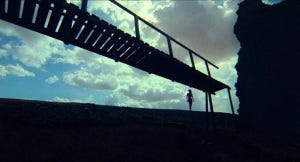The Other Side of the Wind | Sus
‘[Welles] comes back from the grave, gives you a masterpiece and you groan.’
Nick Pinkerton, Film Comment’s Best of 2018 talk at Lincoln Center, 2018
If the key aim of the documentary form is an attempt to tell The Truth, then Orson Welles’ The Other Side of the Wind is just that. A life told in fragments as jagged as the spears…
Keep reading with a 7-day free trial
Subscribe to Cinema Year Zero to keep reading this post and get 7 days of free access to the full post archives.





